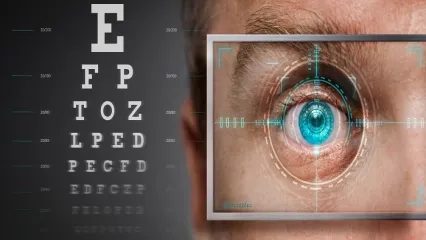Untreated Strabismus Can Cause Vision Problems!
Successful results can be achieved with early diagnosis and treatment of strabismus, which usually occurs in childhood. Stressing that strabismus may lead to the lazy eye if not treated at an early age, Ophthalmologist Assoc. Prof. Dr. İlke Bahçeci Şimşek made important warnings.
Strabismus is a problem that usually occurs within the first year of life. Stating that strabismus may also occur due to paralysis of the muscles that move the eyes in advanced ages, apart from childhood, Ophthalmologist Assoc. Prof. Dr. İlke Bahçeci Şimşek drew attention to the fact that in addition to these, strabismus may occur as the first symptom of thyroid diseases, various muscle diseases, and sometimes tumors.
Eye Examination Is A Must Until the Age of 3!
Explaining that the eye misalignments seen in childhood are mostly inward, and the misalignments in adulthood are outward, Yeditepe University Hospitals Ophthalmologist Assoc. Prof. Dr. İlke Bahçeci Şimşek said, "Every person who has a complaint of inward or outward misalignment or double vision should be examined in detail by an ophthalmologist." However, Assoc. Prof. Dr. Şimşek also pointed out that all children should be checked by an ophthalmologist before the age of 3 and warned that if there is a family history of strabismus, the examination should be done before the age of 1 year.
Stating that various measurements related to misalignment were made with prisms during the said routine eye examination and hidden eye disorders are also evaluated by using drops, Assoc. Prof. Dr. Şimşek added: “Taking the name of the anatomical region in which it is examined in the medical literature, the fundus examination, also called fundoscopy, is performed to determine whether there are different diseases in the retina, an intraocular mass that may cause a decrease in vision, and thus a misalignment in the retina. Sometimes there may be a need for MRI of the orbit or brain.”
“In cases of Late Treatment, 3-Dimensional Vision Loss can be Experienced”
Explaining that in strabismus, if the two eyes cannot be used together, it will result in the loss of the brain's ability to combine the images of the two eyes, Assoc. Prof. Dr. İlke Bahçeci Şimşek said, “Even if the misalignment is corrected in the future, the person uses his/her eyes separately. Unfortunately, the ability to see with both eyes, called binocular vision, cannot develop. Failure to develop binocular vision may result in the absence of 3-dimensional vision and inability to determine distance.”
It also has Aesthetic and Psychological Aspects
Pointing out that strabismus has an aesthetic and psychological aspect that should never be neglected, Assoc. Prof. Dr. İlke Bahçeci Şimşek emphasized that strabismus affects the psychology of the person negatively and that this problem should be resolved before the children reach school age by making an early diagnosis. Yeditepe University Hospitals Ophthalmologist Assoc. Prof. Dr. İlke Bahçeci Şimşek concluded her words as follows: “Eye misalignments are primarily treated with glasses and closure of one eye. A significant part of the misalignments can be treated with these two simple methods. Eye misalignments that are not treated with these methods should be operated without delay. Although surgery cannot eliminate all problems related to misalignments, it provides significant improvement.
About
Faculty and Year of Graduation:
Dokuz Eylul University, 2001
”
See Also
- What is Cataract? Symptoms and Treatment
- Do not Risk Going Blind While Trying to Have Colored Eyes
- Pay Attention to the Flashing Light in the Eye!
- Medication Administration to the Eye
- Thyroid-Related Eye Diseases
- Glaucoma
- The Danger to the World: MYOPIA
- Eyelid Diseases
- Is Strabismus Genetic?
- One in 20 Newborns Have Tear Duct Obstruction
Alo Yeditepe




